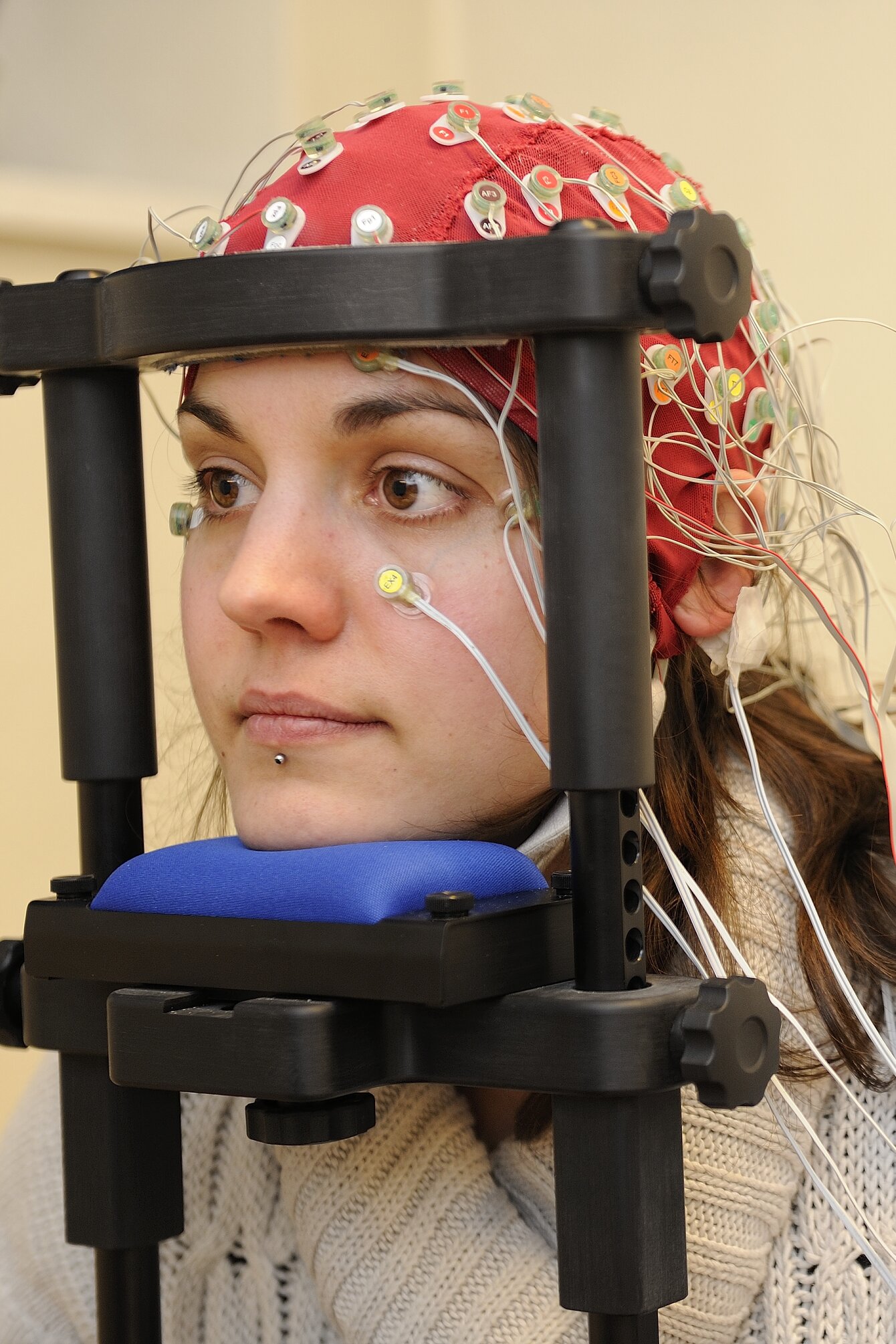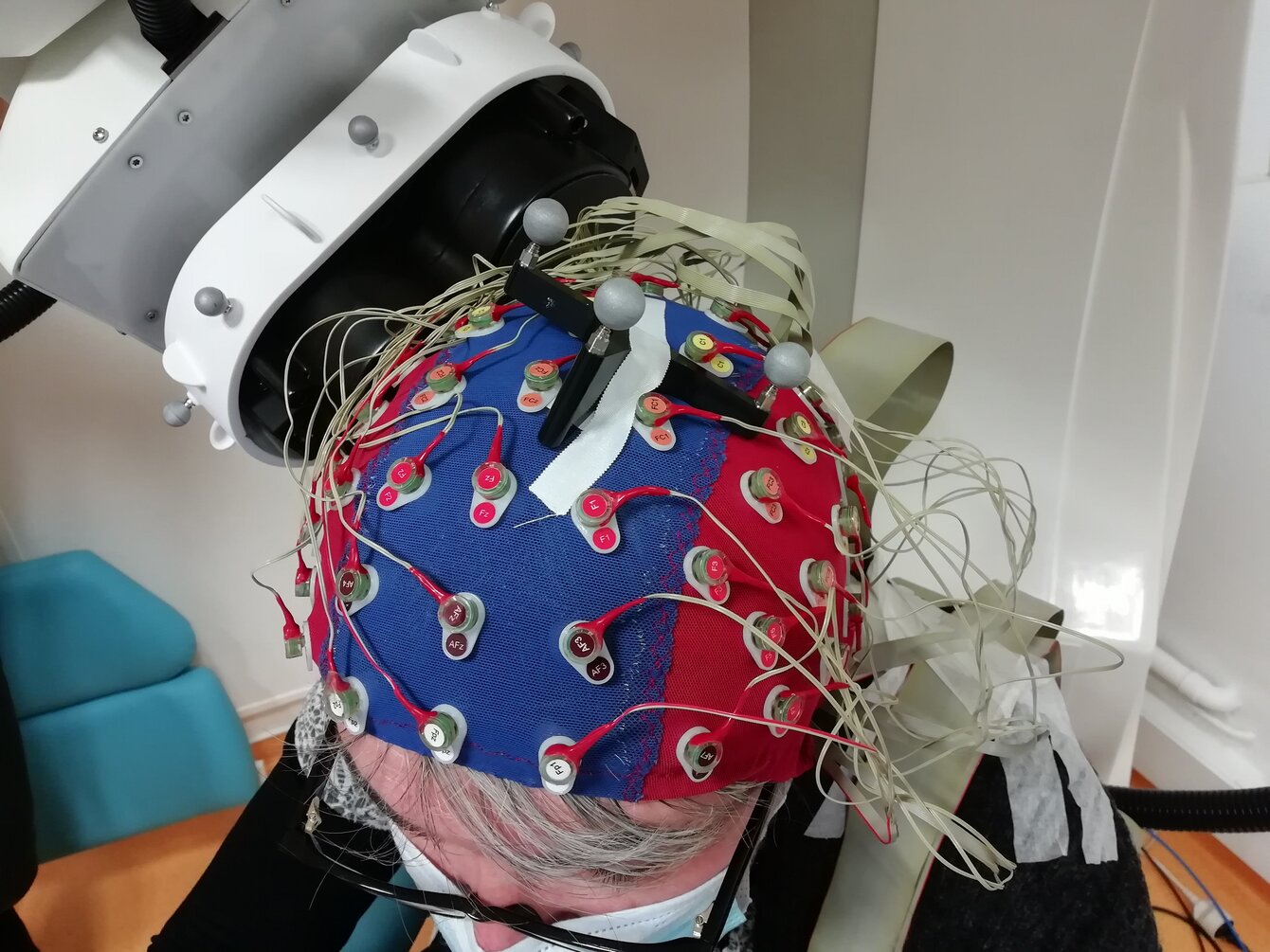
After the EEG equipment has been installed, the subject's head is placed on a stand to avoid any neck pain during the task.
Electroencephalography (EEG)
The team routinely records electroencephalography during cognitive tasks. Analysis of the data obtained (evoked potentials, oscillations, i.e. rhythmic electrical brain activity) enables us to study the processing stages that precede and follow the presentation of a stimulus (tactile, visual or auditory) and/or a response (i.e. preparation, prediction, detection, identification, motor programming, monitoring, etc.).


